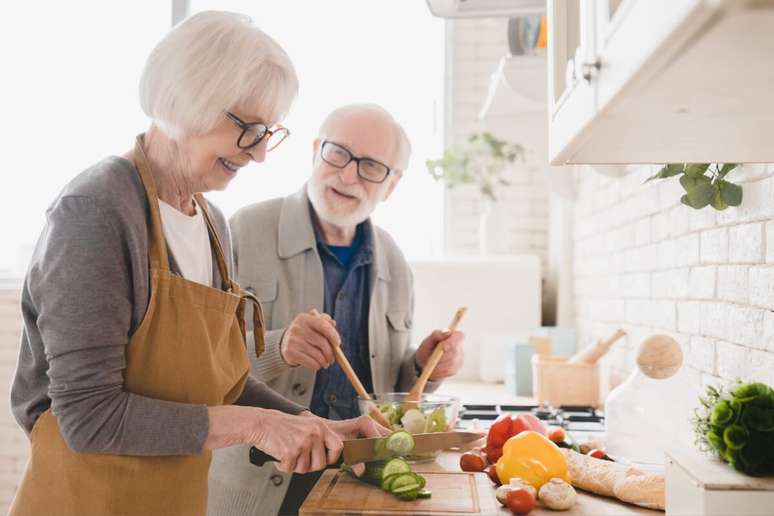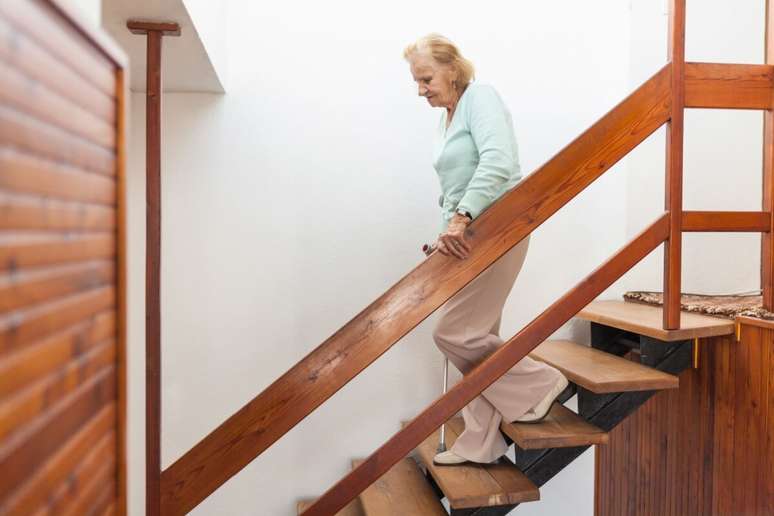Small changes can help prevent accidents that put health at risk
Safety is essential for the longevity and quality of life of the elderly population. In 2024, over 344,000 elderly people were admitted to the unified health system (Sus) following falls and 13,300 could not resist injuries.
Professor Robson Pacheco, a physiotherapist specialized in aging and professor of the Unisul physiotherapy course, warns that one of the major health threats for people over the age of 60 is inside. “The falls are not only accidents, but represent a risk for the loss of autonomy. Often, the fracture of a femur can trigger an irreversible process of decline,” he explains.
According to him, over the years, the human body undergoes natural changes, the reflections decrease, the Neurological conduction Slow muscle strength is reduced and bone density decreases, especially among women after menopause. “Many still believe that falls are an inevitable part of old age, but this is not true. With adaptation, planning and information, it is possible to live in a safer way,” he says.
Therefore, prevention begins at home. Below, take a 10 guidelines to adapt the domestic environment and protect the elderly from the waterfalls!
1. Remove or fix the rugs safely
Loose rugs are one of the greatest causes of briefs and obstacles at home. The ideal is to remove them completely. If they are indispensable, use non -slip tape or double face tape to repair them firmly on the floor, especially at the edges. Long or wavy rugs should be avoided as they tend to enrich or attack the ends of shoes and sticks.
2. Make adaptations in the bathroom
The bathroom is the most dangerous room of the house elderly. The slippery floor, the presence of humidity and the need for toilet movements increase the risk. Install the support bars inside the box, next to the bathroom and sink.
Non -Slip rugs should be both inside and outside the box. A specific bathroom – with non -slip feet and back – allows the elderly to wash with more comfort and safety.
3. Keep the bathroom door unlocked
In the case of autumn, the response time is fundamental. Therefore, the elderly should not close the bathroom door. Leave it only against it, especially when you are only at home, can make access to a family member or rescuer easier.
4. Evaluate the arrangement of the furniture
Table, stools and chairs out of place become dangerous obstacles, especially at night, when the vision is adapted to brightness. The bed should be an adequate height to facilitate the movement of the session and lifting without exaggerated effort. Even the furniture with pointed corners should be revised: the ideal is to opt for rounded corners or use silicone protectors.
5. Use presence lights
Avoid walking in the dark. THE night vision Decreases with age and small obstacles can go unnoticed. Install the participation lights on the path between the bedroom and the bathroom. A lamp on the headboard also guarantees immediate light when it wakes up. LED light movement sensors are excellent allies for corridors, bathrooms and stairs.

6. Plan the organization of the kitchen
Avoid leaving tools and foods on very high or very low shelves. The effort to achieve objects can cause loss of balance. Going up into the stools, even the bass, is absolutely contraindicated.
Plan the organization of the kitchen so that everything is at hand, preferably between the height of life and the eyes. The stimuli with a slower cooking routine do not hurry also to avoid accidents.
7. Respect the times and avoid the night bath
The bathrooms should be preferably taken during the day, when there is more light, higher temperature and more people at home. Furthermore Prevent fallsThis reduces the risk of hypothermia and allows the elderly to ask for help if necessary. The combination of wet floor, tiredness and cold is more dangerous in the late afternoon and in the evening.
8
After a fall, many elderly develop the so -called “fear of autumn syndrome” that leads them to inactivity. This may seem like protective behavior, but in reality it weakens even more muscles and joints. Encourage light and regular physical activities such as walking, lengthening and exercise -oriented exercises. Keeping the body active is the best way to avoid new falls.
9. Keep the brain in motion
Physical health is side by side with mental health. Reading, crossed words, crafts, writing, memory games or even learning of a new ability (such as a musical instrument or language) helps to maintain the mind active, stimulate concentration and prevent cognitive decline. These activities also have a positive impact on mood and self -esteem.
10. Hydrates the body
In winter, water consumption tends to fall. And this is particularly dangerous for the elderly, who already have less Feeling of thirst. Dehydration compromises thermal regulation, circulation and muscle function, increasing the risk of dizziness and falls.
“The elderly remain hydrated, drinking water – and not only tea or coffee – is extremely important to ensure the balance of the body, so called homeostasis,” says Professor Robson Pacheco. The recommendation is simple: to ingest, on average, two liters of water a day, even on cold days.
By Carol Passos
Source: Terra
Ben Stock is a lifestyle journalist and author at Gossipify. He writes about topics such as health, wellness, travel, food and home decor. He provides practical advice and inspiration to improve well-being, keeps readers up to date with latest lifestyle news and trends, known for his engaging writing style, in-depth analysis and unique perspectives.








